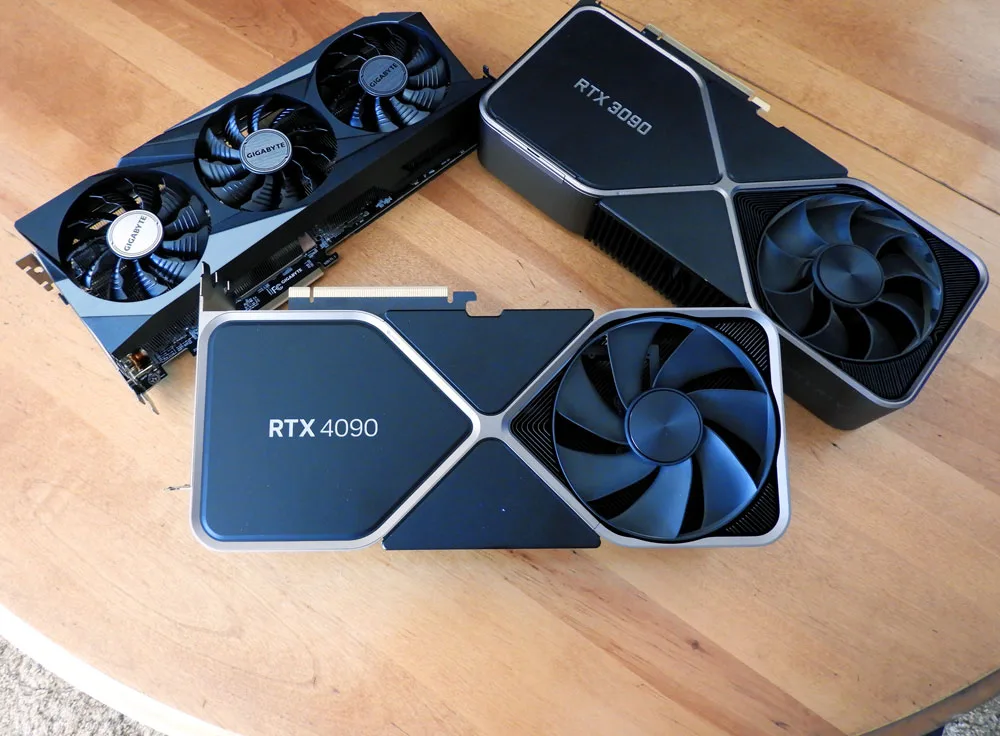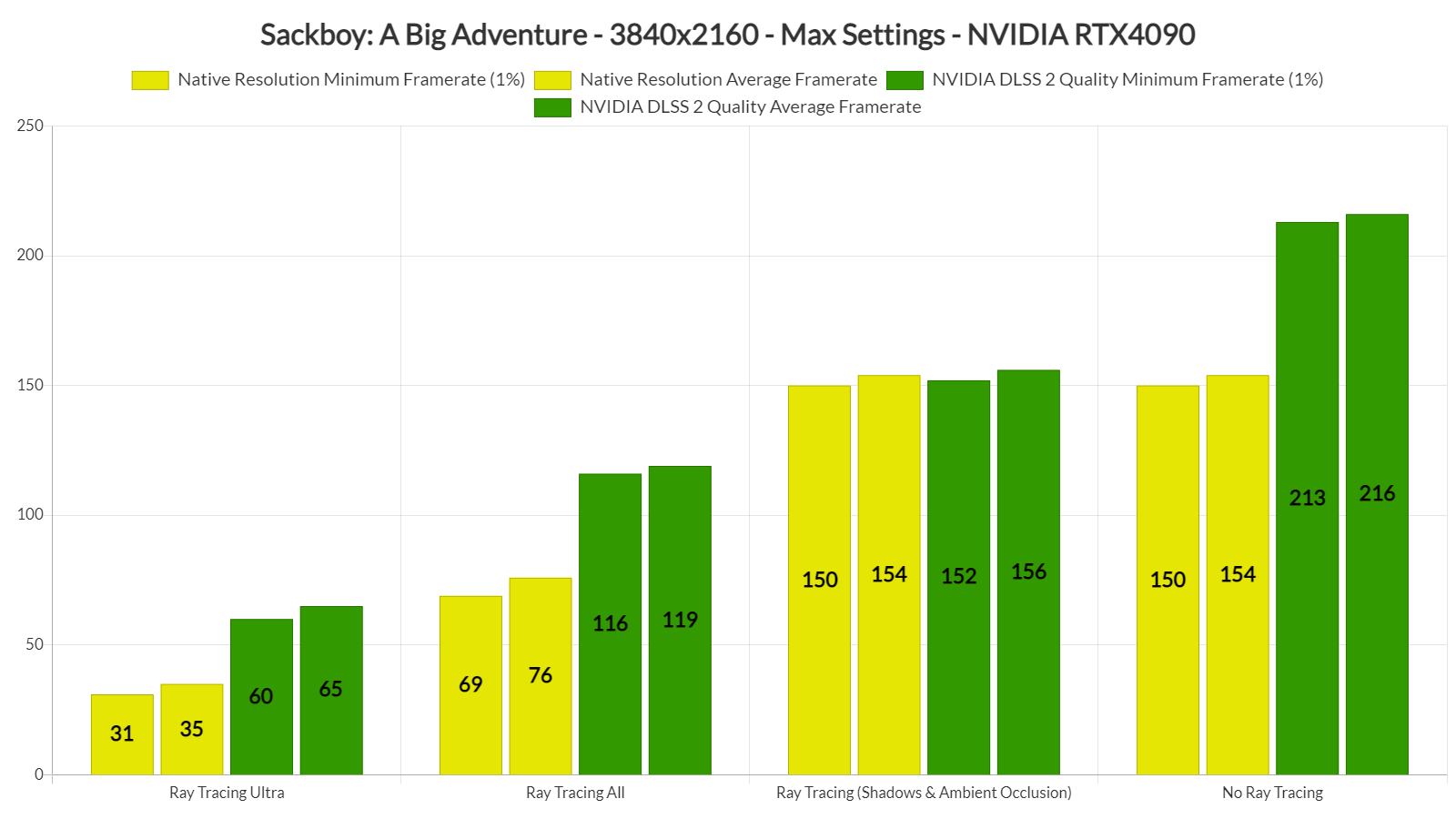the RYS from amd ?
Rys is from a lot of IHVs.
Follow along with the video below to see how to install our site as a web app on your home screen.
Note: This feature may not be available in some browsers.
the RYS from amd ?
This is seriously something I just don't understand. Imagination/PowerVR did it all years before NVIDIA, yet somehow NVIDIA doing it later was the miracle?
Only 2, just 2 goes at eachRys is from a lot of IHVs.
2009 was the announcement of CausticOne, the first (FPGA-based) incarnation of the basic ideas that made it into PowerVR Wizard (and then on into Photon in more modern form after the product reboot more recently).Caustics did it 2006 or whereabouts, then imagination aquired them later.
Only 2, just 2 goes at each
2009 was the announcement of CausticOne, the first (FPGA-based) incarnation of the basic ideas that made it into PowerVR Wizard (and then on into Photon in more modern form after the product reboot more recently).
So Caustic Graphics came out with CausticOne in 2009 and was acquired by Imagination in 2010. (Wiki)Only 2, just 2 goes at each
2009 was the announcement of CausticOne, the first (FPGA-based) incarnation of the basic ideas that made it into PowerVR Wizard (and then on into Photon in more modern form after the product reboot more recently).
Edit: PowerVR IP is licensed to companies currently using it and imagine it includes RT patents.After the acquisition by Imagination Technologies, an initiative began to integrate the Caustic ray tracing coherence gathering, fixed function geometry testers and a new streaming BVH generator into an exiting Series 6 PowerVR GPU architecture. This allowed GLSL shaders which previously had to run on a host CPU to instead be executed on-chip using the existing PowerVR shading clusters and still gain benefit from the ray reordering being performed by the Caustic traversal unit.[14]
PowerVR accelerators are not manufactured by PowerVR, but instead their integrated circuit designs and patents are licensed to other companies, such as Texas Instruments, Intel, NEC, BlackBerry, Renesas, Samsung, STMicroelectronics, Freescale, Apple (Imagination Technologies signed a new multi-year, multi-lease agreement under which Apple has access to a wider range of Imagination’s intellectual property in exchange for license fees on January 2, 2020.[1] The re-kindling of the partnership between the two companies comes as Apple's licences to Imagination graphics IP expire at the end of 2019.[2]), NXP Semiconductors (formerly Philips Semiconductors), and many others.
SaarCOR was done at some university if I recall. I'm not sure if it ever sall a commercial release but I recall it being one of the earliest ray tracing acceleratora
Absolute performance measurements for the Saar-COR chip with 1, 2 and 4 RTCs, 272 KB cache, and 1 GB/s memory bandwidth. 4 RTCs have only half the floating-point performance of a GeForce3 and there is an almost linear relation between performance and the number of RTCs.
A closer analysis shows, that the Cruiser scene with 3.5 million triangles is limited by the memory bandwidth for triangle fetching. Table 3 gives performance measurements of the CruiserGL scene for different sized intersection-caches in combination with 1 and 2 GB/s bandwidth to main-memory. This shows that with a bandwidth of 2 GB/s and an int-cache of 288 KB the performance again scales linearly in the number of RTCs. Achieving linear speed-up with 4 RTCs in BQD-2-scene is harder: we need to enlarge all caches four times to roughly 1 MB together with a 2 GB/s bandwidth to main-memory.
In contrast to these complex models, the Quake3 scene shows perfect linear scaling. Using the standard cache and a bandwidth of only 250 MB/s linear scaling is achieved even up to 16 RTCs. The floating-point performance of the GeForce3 equals the floating-point performance of a full SaarCOR chip with 8 RTCs and full shading. Rendering the Quake3 scene with 8 RTCs achieves 235 fps


NATIVE 4K ray tracing test with max settings, the 4090 is faster by ..
Crysis Remastered:
3090: 97%
6900XT: 4.7X
Chernobylite:
3090: 87%
6900XT: 3.8X
Battlefield V:
3090: 70%
6900XT: 3.7X
Hitman 3:
3090: 90%
6900XT: 3.6X
Cyberpunk 2077:
3090: 90%
6900XT: 3.5X
Guardians of the Galaxy:
3090: 70%
6900XT: 3.3X
Dying Light 2:
3090: 87%
6900XT: 2.9X
F1 2022:
3090: 86%
6900XT: 2.6X
Metro Exodus:
3090: 75%
6900XT: 2.6X
Watch Dogs Legion:
3090: 80%
6900XT: 2.6X
Ghostwire Tokyo:
3090: 75%
6900XT: 2.5X
Doom Eternal:
3090: 65%
6900XT: 2.4X
Deathloop:
3090: 70%
6900XT: 2.3X
Resident Village:
3090: 84%
6900XT: 2.15X
Shadow of Tomb Raider
3090: 90%
6900XT: 2.2X

RTX 4090 Performance – 45 Games, VR & Pro Apps Benchmarked
The $1599 RTX 4090 Performance of 45 Games, VR, SPEC, Pro Apps, Workstation & GPGPU BTR recently received a RTX 4090 Founders Edition (FE) from ... Read morebabeltechreviews.com
Wow!!! AMD have got some serous catching up to do with their RT performance in RDNA3.

And these are without SRE.Wow!!! AMD have got some serous catching up to do with their RT performance in RDNA3.
Really dislike this trend of destroying RT performance on any GPU that is not a 4090 for little to no visual gain. Just based on the screenshots GameGPU provided the RT implementation is laughable and not worth the extreme performance cost.The PC release of Sony's Sackboy suprises with raytracing support. RTX4090 is in 1440p over 2x faster than a 3080TI. Should make it around 1.95x over the 3090TI:

Sackboy: A Big Adventure тест GPU/CPU | RPG/Ролевые | Тест GPU
Примите вызов в одиночку и попытайтесь выиграть полную опасностей эпическую гонку со временем – или соберитgamegpu.com
The 4090 is also 3.9X faster than 6900XT @4K! Meanwhile, the 3080Ti is 75% faster at 4K and 65% faster than 6900XT at 1440p.The PC release of Sony's Sackboy suprises with raytracing support. RTX4090 is in 1440p over 2x faster than a 3080TI. Should make it around 1.95x over the 3090TI:
Welcome to the world of UE4 RT reflections, they are applied everywhere even if the materials are not really reflective, the game also has an "Ultra" reflections mode that enables full resolution for the ray traced reflections.When are we finally getting good optimized RT in games again?


 www.dsogaming.com
www.dsogaming.com
It's harder when the game is designed around raster limitations. In any case where a game has good artistic control of all the raster hacks RT becomes increasingly harder to justify for the cost. You need to go all in like Control, Cyberpunk, Metro etc. for it to start making sense. Judging by those screenshots it seems like a pretty minor addition in Sackboy.Really dislike this trend of destroying RT performance on any GPU that is not a 4090 for little to no visual gain. Just based on the screenshots GameGPU provided the RT implementation is laughable and not worth the extreme performance cost. When are we finally getting good optimized RT in games again?
this is similar to what RT boost mode does for Crysis Remastered, although in Crysis case the developers admit they do that for fun and is disabled by default.The 4090 is also 3.9X faster than 6900XT @4K! Meanwhile, the 3080Ti is 75% faster at 4K and 65% faster than 6900XT at 1440p.
Welcome to the world of UE4 RT reflections, they are applied everywhere even if the materials are not really reflective, the game also has an "Ultra" reflections mode that enables full resolution for the ray traced reflections.
